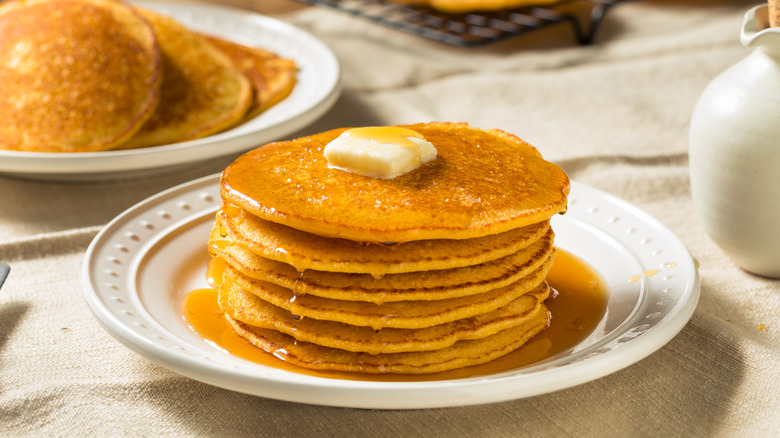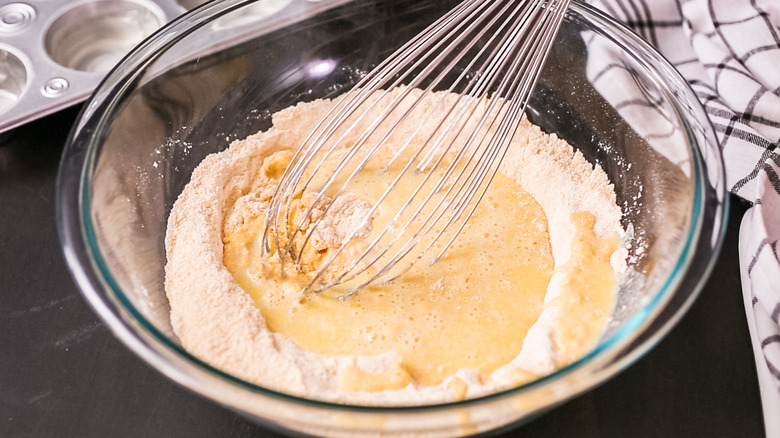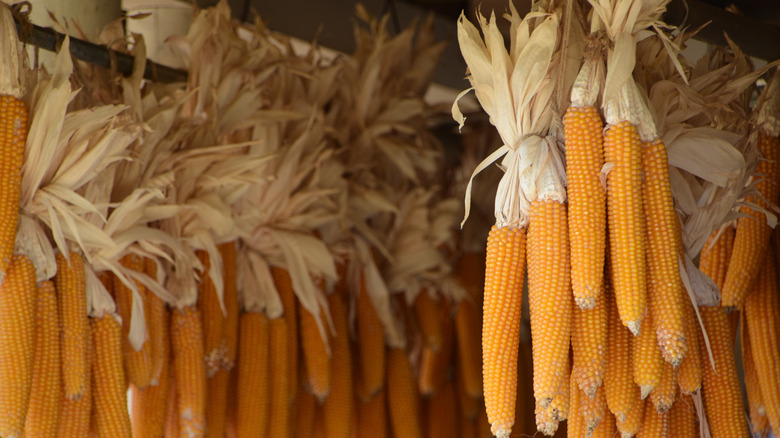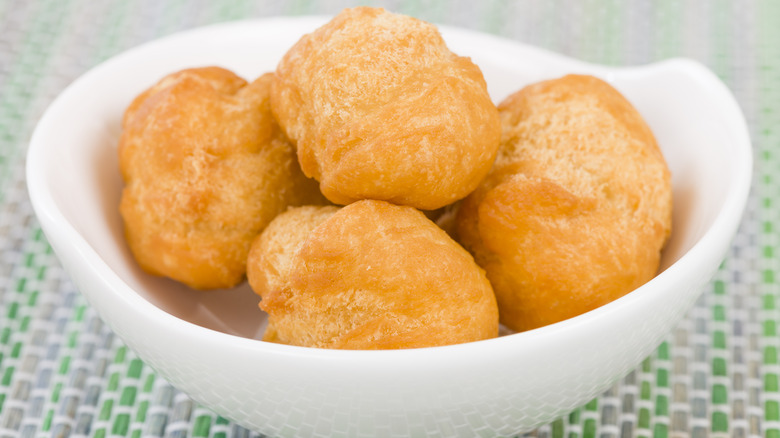Johnnycakes: The Cornmeal Pancake With A Mysterious Origin
Regional dishes are one of the things that makes the culinary world so varied and interesting. For the most part, Americans can pinpoint a geographical location of certain foods just by hearing their names. For instance, it's common knowledge that fried green tomatoes are equated with the South, fish tacos are a west coast specialty, clam bakes are at their finest in New England, and buckeyes hail from the midwest, specifically Ohio. Such dishes usually thrive in these specific regions because the ingredients used to make them are plentiful there, or they are influenced by the people who settled in the area.
Occasionally, you'll come across food that you know is equated with a specific part of the country — but then find out it's not exclusive to that region. Enter the johnnycake. Johnnycakes can be found in abundance in both the New England states and the South, two American regions not exactly next door to each other.
So how did they come to be culinary staples in both the North and South?
What is a johnnycake?
While some may describe a johnnycake as being reminiscent of a cornmeal pancake, USA Today 10 Best notes that a great description of a johnnycake would be if a pancake and polenta had a baby. At its most basic and traditional, a johnnycake consists of little more than cornmeal, water, and salt, per What's Cooking America. As the mixture forms into a batter, portions of it are ladled onto a griddle. Once the bottom is browned, the cake is flipped and browned on the other side. In many ways, it's a process very similar to making pancakes, but the cooking time is substantially longer.
Contemporary johnnycake recipes often include the addition of fat, eggs, flour, sugar, and other desired ingredients to the batter, which is much more like traditional pancake batter with some added cornmeal. A sweet topping like maple syrup or fruit is typically served with the finished cakes.
As far as the name goes, some historians believe they were first called Shawnee cakes and that "johnnycake" is a result of mispronunciation. Another theory is that, because of their simple ingredients that kept well and didn't spoil easily, these cakes were good for packing on long journeys and, therefore, became known as "journey cakes" morphing into the name that we know them by today, per The Spruce Eats. Still other historians believe that the johnnycake name came from "janiken," the American Indian word for "corn cake," via What's Cooking America.
Where do they come from?
Johnnycakes have strong ties to Native American history. According to What's Cooking America, when English settlers arrived at Plymouth in 1620, they were starving, as their wheat and other goods had rotted during their journey across the Atlantic. They were also unfamiliar with the climate and growing conditions of the new land. Indians native to the area, the Pawtuxet, introduced the settlers to grinding corn for food. Some historians even believe that johnnycakes were served at the first Thanksgiving, per Daring Gourmet. Since then, New England, particularly Rhode Island, has been serving the traditional corn cakes to hungry locals and tourists alike.
As far as the American south and johnnycakes go, Native Heritage Project points out that Indian tribes from the southern states relied heavily on corn as a part of their diet. You can still see this today in the way corn is used in a lot of southern dishes: grits, hominy for soups, even corn masa for tamales in the southwest. Naturally, this source of food was introduced to settlers who ventured south of New England and they probably became familiar with the concept of these cakes shortly after coming into contact with the natives.
A twist in the tale
As if the story wasn't interesting enough, johnnycakes are also plentiful in the Caribbean islands. Per The Spruce Eats, during the Independence War in North America, many Native Americans fled to South America and the Caribbean, naturally bringing their foods and recipes with them. But the johnnycakes you'll find in places like Jamaica today are very different than what you see on the mainland. Made with no cornmeal at all, they are more of a side dish made with flour, baking powder, salt, fat, and water. Once the dough is brought together and formed, it is fried until golden and puffed, per travel site Jamaicans.
Whether you're a New Englander who wants your johnnycakes as traditional as possible, an Islander who prefers a fluffy, fried version, or someone who likes more of a pancake with a touch of corn, johnnycakes have survived for hundreds of years and will likely remain revered for generations to come.



